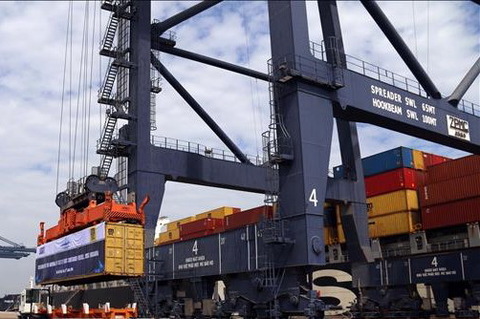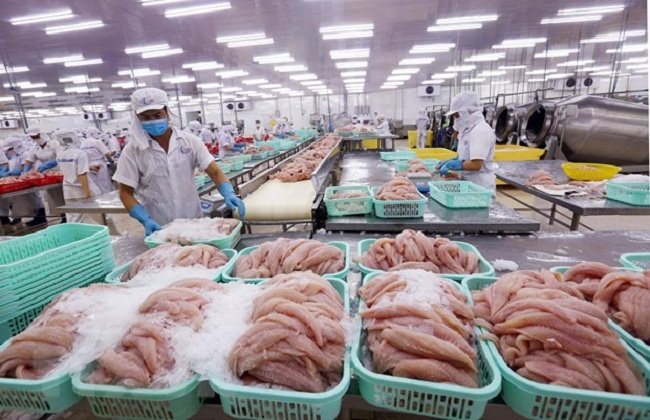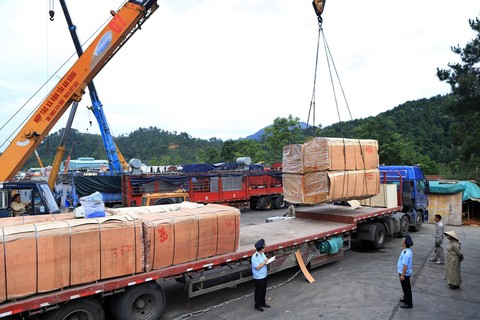Ba Ria – Vung Tau promotes marine economy, eco-tourism
Ba Ria – Vung Tau promotes marine economy, eco-tourism
The southern coastal province of Ba Ria-Vung Tau is improving connections between its Cai Mep-Thi Vai Port complex and surrounding provinces to strengthen its marine economy, and promoting environmentally friendly projects to develop its tourism sector.

Experts have urged the province to turn the Cai Mep-Thi Vai Port into an international transshipment port and develop its industrial parks and clusters. The deep-water port is capable of receiving large container vessels with international transhipments of up to 20,000 deadweight tonnage (DWT), carrying 18,000 TEU capacity.
Nguyen Van Trinh, former chairman of the provincial People’s Committee, said the Cai Mep-Thi Vai Port complex is one of only 19 in the world capable of handling 190,000 DWT vessels.
The province aims to increase the capacity of its seaports, improve international shipment services, and achieve throughput capacity of more than 100 million. By 2020, the province is expected to have 18 port operators and 219 logistics companies.
However, most experts said the transportation system connecting deep-water ports with major economic centres in the region remains weak. To improve the local marine economy, connectivity between the Cai Mep-Thi Vai Port complex and surrounding provinces should be improved, they said.
Eco-tourism
Trinh Hang, director of the provincial Department of Tourism, said in recent years the province was also speeding up eco-tourism projects and focusing on attracting investors.
However, only a few big investors have shown interest, although more investors have explored the area recently.
To tap the potential of sea tourism, the province has built a 10-km coastal route which goes through fishing villages and connects Vung Tau City with Long Dien, Dat Do and Xuyen Moc districts and Binh Thuan Province.
The local authority also wants to develop Con Dao Island into a high-quality national tourist site, Hang said.
The province targets 8.6 million visitors by 2025, an annual average growth rate of 11 to 13 per cent, and an increase in the number of high-standard hotel rooms to 16,000. It also aims to create about 38,000 jobs by that time.
Hang said that beaches and entertainment centres in Vung Tau City were undergoing cleaning and improvement to attract more visitors.
The province has invested in five tourism areas with varying functions, such as sports, entertainment, culture, trade and eco-tourism, he said.
The tourism department is proposing new incentive policies for tourism investment, completion of a tourism master plan, and improved tourism promotion.
In recent years, local authorities have focused on major, high-end tourism projects and encouraged businesses to tap potential markets. Many tourism complexes have gained prestige such as the Ho Tram Strip and Six Senses Con Dao resort.
The province also has high hopes for the Paradise Vung Tau complex under construction.
Pollution
Experts and local authorities, however, are concerned about deforestation and pollution because of a boom in industrial zones along rivers, which is affecting environmentally friendly tourism projects.
Coastal aquatic-product processing plants discharge untreated wastewater into the environment daily, seriously threatening the mangrove ecosystem and adjacent land areas.
Water pollution in the areas has resulted in rapid saline intrusion, coastal erosion and environmental degradation.
Provincial authorities have been urged by experts to prohibit all types of exploitation in mangrove forests, and encourage local households to take part in reforestation programmes.
Ba Ria-Vung Tau, home to a 305km-long coastline, is one of the leading tourism hubs in Viet Nam. With a cool and dry temperature year round, it is an ideal place for sea sports tourism and deluxe seaside resorts.
Vung Tau City, lying on a peninsula of the same name, is the tourist and commercial centre of the province.
A number of beautiful beaches, such as Ho Coc, Bai Sau and Dam Trau (in Con Dao Islands), have become magnets for local and international visitors. The province is also famous for many cultural and historic relics.
Last year, the province, one of Viet Nam’s leaders in FDI attraction, approved 44 new FDI projects and additional investment for 14 foreign direct investment projects, totaling $1.9 billion of registered investment.
In addition, the province approved 59 new domestic projects worth VND18.76 trillion (US$806.7 million) in registered investment, according to the Department of Planning and Investment.
It is also focusing on attracting more investment in logistics, tourism, supporting industries, hi-tech agriculture and urban development.






















